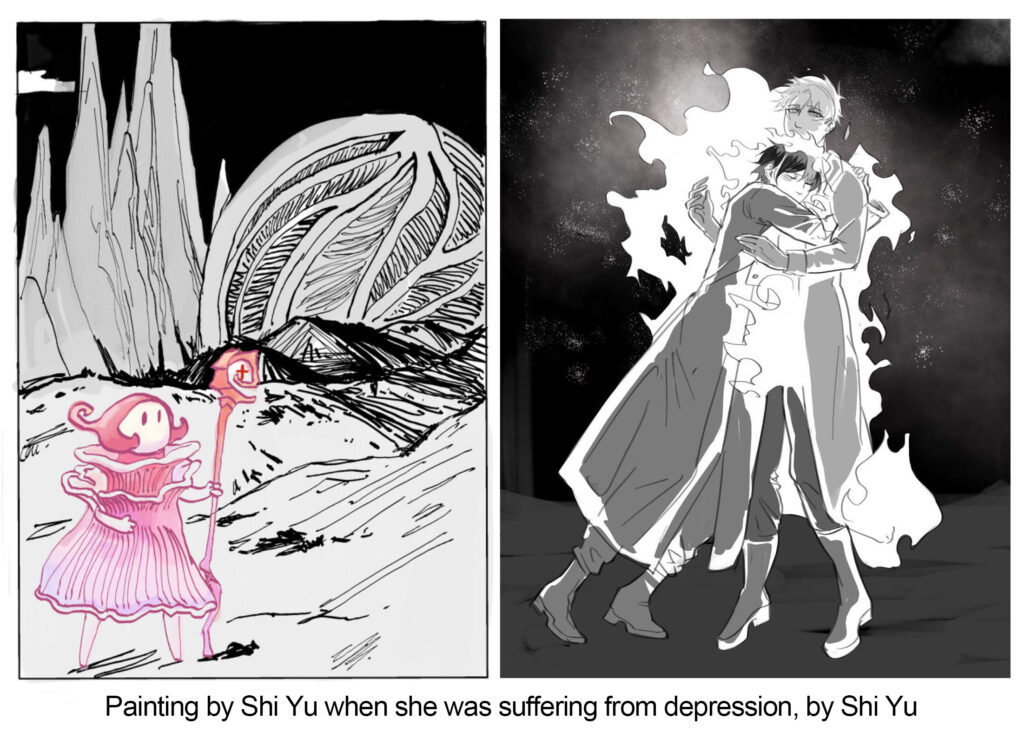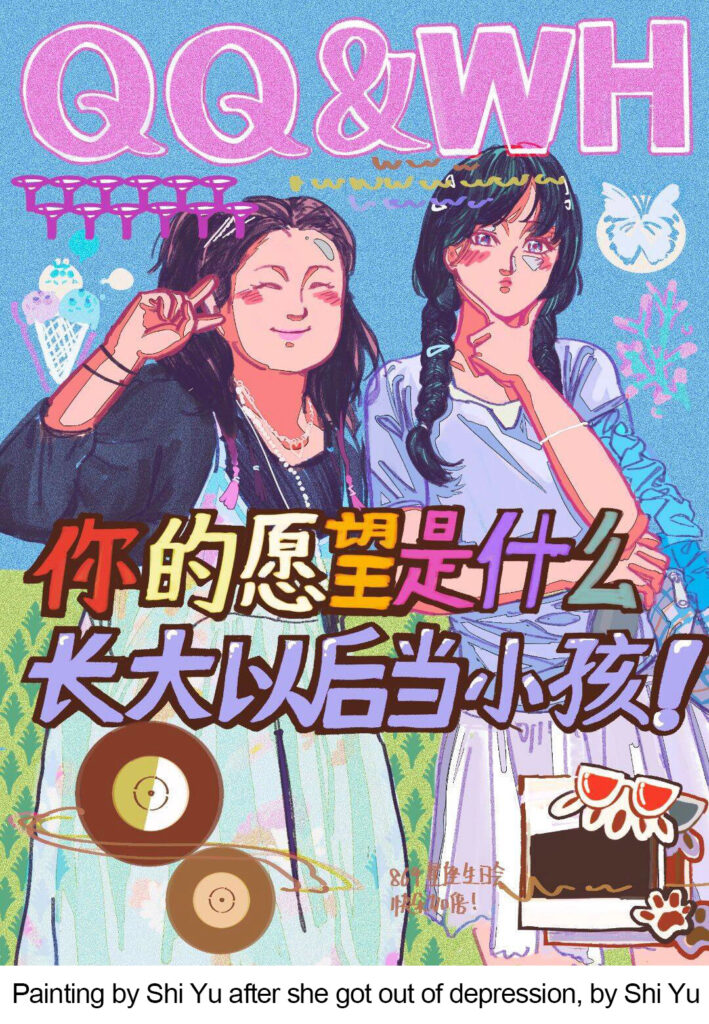Art healing as one of the ways of psychotherapy has been certified by many scholars. For example, Maslow’s Hierarchy of Needs Theory shows that apart from the basic needs of human beings, there are also aesthetic needs, and art can satisfy people’s needs from an aesthetic point of view and enrich people’s real life. Psychologist Rudolf Arnheim believes that since there is an increasingly clear relationship between art acceptance and psychotherapy, it should be believed that art has the potential to bear the inherent mission of benefiting the human body and mind.

And with the development of the original character culture, more and more people with mental illnesses are choosing to create their own original character (OC) and dissect their selves by having a dialogue with them, which on some level has a similarity with the sand tray therapy method.
Rachel Zhou, who studied psychology as an undergraduate and is applying for a MA in art healing, told me that there is a classic Tree-House-Person test in psychology in which the quiz taker has to draw these three things on a piece of paper.
‘What does the overall composition look like? What is the size of the house, tree and person? What colours are used? Does the house have doors and windows, what kind of trees are there? What kind of clothes are the people wearing? These are all details that will reveal their path of thought through the medium.’
She explains, ‘Original characters can be described as dissimilar, but without having such a hidden dark line as the house-tree man, but rather as being able to allow the patient to actively and strongly express himself. Words can deceive, sight can deceive, but not the human subconscious. If someone treasures the original character he has created, then the truth that he subconsciously exudes to the character is the truth that can be trusted.’
Shi Yu, who graduated with a degree in animation and is now an art teacher, used to be a patient of depression. In the interview, she told me that she did feel that she could handle her feelings better when she was working on OC creation, and OC also helped her gradually get out of her depression.
‘’Many times I don’t like to express or even lie about my true feelings, but when I put it on OC it becomes objectified and othered, which will also somewhat allow me to see my inner trauma and struggles in a third perspective.’

Shi Yu revealed to me that she used to have a lot of catastrophic thinking during the time she was suffering from depression. It was at that time that she would then draw OCs’ acts of intimacy and trust between them to build up her sense of security a little bit.

When asked if she supports original characters as a therapeutic tool for psychological healing, Shi Yu showed great affirmation. She has seen many students who are not good at communicating with strangers in the beginning, but become very excited when talking about their original characters and favourite games and anime. Currently Shi Yu is planning to have students introduce their OCs in the first class of the school year as a way to get a feel for what students are really like.
‘There’s no creator who doesn’t get excited when it comes to OCs, and basically talk about them a whole lot. From my personal observation, speaking about oc will be more effective for these kids than setting up a sandbox.’
Anna, a high school student diagnosed with Autistic Spectrum Disorders and Attention-deficit/hyperactivity disorder, also finds psychological comfort through original characters, but she didn’t realise that her virtual friend was OC until I educated her on the concept of original characters.
‘My virtual friend became my connection to reality; whenever I couldn’t concentrate, I would talk to her and imagine how she would persuade me to study ……. Even though my grades still aren’t great, having her in my life gives me positive momentum.’
Anna’s original character does not go beyond a realistic setting, as she creates her OC from herself.Behind the simplicity of her characterisation is a dissection of self and a blend of past experiences.
‘I can’t describe to other people the process of my dialogue with my virtual friends, it requires revealing my heart completely to others, and right now I don’t have the courage to do so. But I’m sure in the future I’ll be able to connect with real friends on such a deep level.’
This website is part of a student project. While the information on this website has been verified to the best of our abilities, we cannot guarantee that there are no mistakes or errors.
The material on this site is given for general information only and does not constitute professional advice.
The views expressed through this site are those of the individual contributors and not those of the website owner. We are not responsible for the content of external sites.


